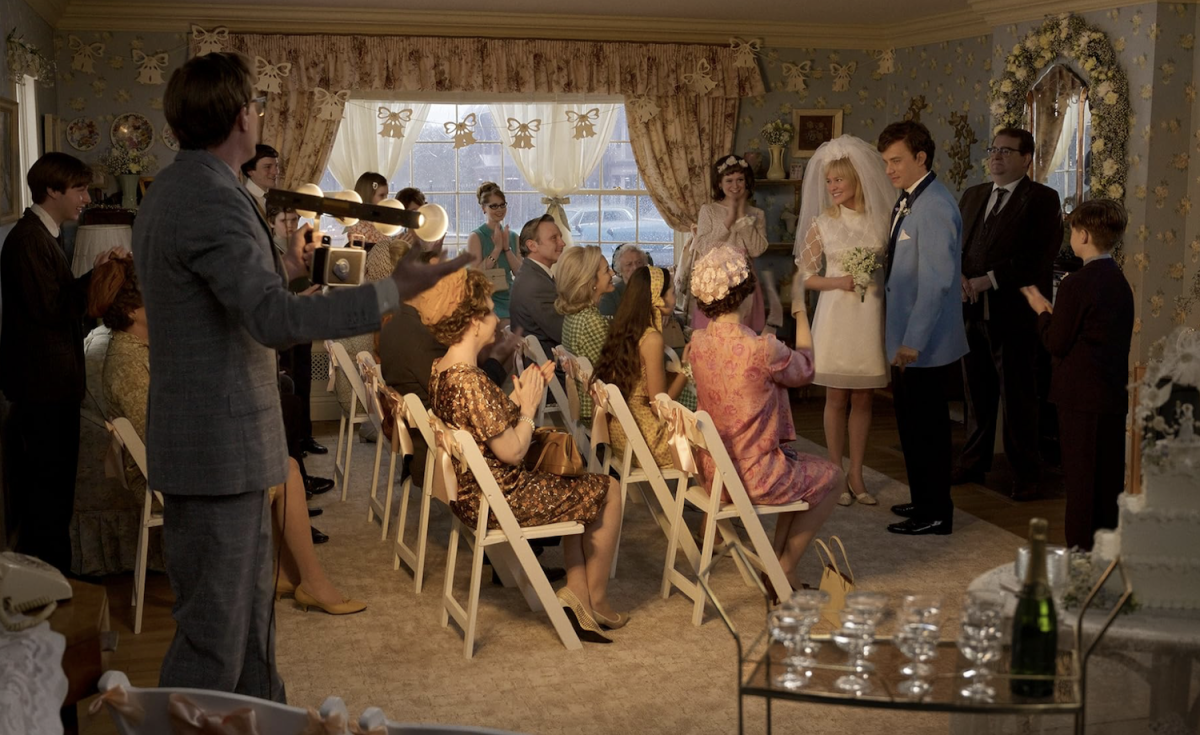“Here” is perhaps one of Robert Zemeckis’ most ambitious films to date: a nonlinear, multigenerational narrative spanning the 11,000-year history of a piece of land from the post-Ice Age landscape to current day. This is undoubtedly a monumental task, particularly under budget limitations of $50 million. The challenge is further complicated by the casting of Tom Hanks and Robin Wright, who, at ages 68 and 58 respectively, play a range of ages from 17 to senior citizens. Zemeckis, however, proposes one solution: artificial intelligence. This technological choice, in addition to a convoluted plot and shallow writing, makes the film less than impressive.
The primary narrative follows Richard Young (Hanks) as he grows up and lives his adult life on that same piece of land, which his parents purchased after World War II. Richard meets Margaret (Wright), and together, the couple builds a family in the same house Richard was raised in. The couple faces the challenge of raising children while still living with Richard’s parents, and as they age, they confront the typical hardships of marriage.
“Here” spans not only Richard’s lifetime but also the history of Earth. The story includes dinosaurs, the Lenni-Lenape people, and William Franklin (Daniel Betts), Benjamin Franklin’s son born out of wedlock. Zemeckis uses conventional flashbacks but also — more interestingly — temporal windows, where different time periods and events appear within the same frame. These eras were intentionally selected to supplement the primary storyline, but their transitions feel scattered rather than neatly arranged.
Although the film attempts to depict various eras, its historical portrayals often lack what makes us sympathize with characters — flaws, vulnerability and relatability. Many well-worn tropes emerge: the emotionally distant husband who prioritizes work over family, the frustrated wife feeling unfulfilled in her domestic role and their subsequent midlife crisis all follow a formulaic path of temporary separation and eventual reconciliation.
The writing in “Here” fails to convey the depth and empathy that beloved film characters possess. By the film’s end, the audience feels no more sympathetic toward the characters than they did at the start.
But the frankly terrible use of AI remains a cornerstone of why “Here” is so vehemently criticized. For makeup artists and AI masters alike, it is ambitious to de-age two actors already in their 50s and 60s, and yet even with impressive developments in AI, Zemeckis’ attempt at de-aging Hanks and Wright indefensibly failed.
Wright’s smile lines are blurry, as if she used Facetune to retouch her wrinkles, and her tears at the film’s end are white, clearly indicating their artificiality. AI first appears when Hanks attempts to portray a 17-year-old. A young Richard is sitting on the floor facing away from the camera, and once he turns to speak, it’s clear his face was swapped from a 68-year-old Tom Hanks to a young version, akin to the Snapchat babyface filter.
The Writers Guild of America and Screen Actors Guild-American Federation of Television and Radio Artists 2023 strikes focused heavily on AI usage in screenwriting, including the same generative AI that Zemeckis uses in “Here.” The application of AI to de-age the actors, while groundbreaking, also echoes the concerns raised during the strikes about AI potentially replacing human creativity and labor.
SAG-AFTRA’s newest agreement with Ethovox safeguards actors and their likenesses in visual and audio AI. While that’s a step in the right direction for workers’ rights and preventing exploitation, there is still hesitation surrounding AI’s visual cohesiveness. Hanks and Wright’s role in “Here” normalizes the use of AI in filmmaking, precisely what the WGA and SAG-AFTRA strikes aimed to address.
There’s a fine line between using AI as a creative tool and using it to cut corners — cutting costs and jobs. However, if Zemeckis redid this film, it would be significantly more effective to use younger actors to play the younger versions of Hanks and Wright, like in “Forrest Gump,” his previous film with the two.
In “Here,” the AI technology morphs from a complementary element of the film into a noticeable distraction that complicates an already convoluted narrative. The ambitious integration of AI leads to moments that awkwardly flirt with the uncanny valley, breaking the audience’s immersion as the characters, while appearing to be human, fall short of authenticity.
Contact Chloe Haack at [email protected].
























































































































































